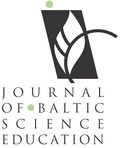THE IMPACT OF PHYSICAL MOLECULAR MODELS ON STUDENTS' VISUO-SEMIOTIC REASONING SKILLS RELATED TO THE LEWIS STRUCTURE AND BALL & STICK MODEL OF AMMONIA
| Title | THE IMPACT OF PHYSICAL MOLECULAR MODELS ON STUDENTS' VISUO-SEMIOTIC REASONING SKILLS RELATED TO THE LEWIS STRUCTURE AND BALL & STICK MODEL OF AMMONIA |
| Publication Type | Journal Article |
| Year of Publication | 2020 |
| Authors | Nkosi, T, Mnguni, L |
| Journal | Journal of Baltic Science Education |
| Volume | 19 |
| Issue | 4 |
| Start Page | 594-604 |
| Pagination | Continuous |
| Date Published | August/2020 |
| Type of Article | Original article |
| ISSN | 1648-3898 |
| Other Numbers | E-ISSN 2538-7138 |
| Keywords | ball & stick models, Lewis structures, physical models, visuo-semiotic reasoning |
| Abstract | Visuo-semiotic models, such as Lewis structures and ball & stick models, are widely used to enhance students’ learning. However, there is limited research about the impact of these models on specific visuo-semiotic reasoning skills. In the current research, we aimed to determine the extent to which physical molecular models could enhance specific visuo-semiotic reasoning skills among students. The research question that we explored was, “what is the impact of physical molecular models on Grade 11 students’ visuo-semiotic reasoning skills related to Lewis structures and ball & stick models of ammonia?” In this mixed-methods research, we collected data from purposively selected Grade 11 chemistry students aged between 15 and 18 from an under-resourced school in South Africa. Through a quasi-experimental design, participants in the experimental group (n = 101) used physical molecular models to learn about Lewis structure and ball & stick models of ammonia while participants in the control group (n = 100) did not. We subsequently tested students' visuo-semiotic reasoning skills. Results show that using physical molecular models significantly improved students' visuo-semiotic reasoning skills and reduced associated learning difficulties. We, therefore, recommend that these models should be used as an instructional tool to enhance learning. |
| URL | http://oaji.net/articles/2020/987-1597214439.pdf |
| DOI | 10.33225/jbse/20.19.594 |
| Refereed Designation | Refereed |
| Full Text |
